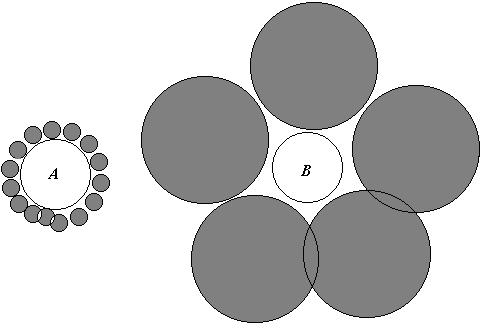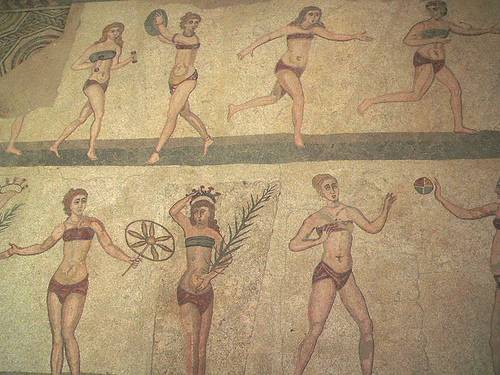
An optical illusion. Circles A and B are the same size.

An optical illusion. Circles A and B are the same size.
Bela Lugosi was buried in a cape.
Martin Kallikak was a youthful soldier in the Revolutionary War. At a tavern frequented by the militia he met a feeble-minded girl by whom he became the father of a feeble-minded son. In 1912 there were 480 known direct descendants of this temporary union. It is known that 36 of these were illegitimates; that 33 were sexually immoral; that 24 were confirmed alcoholics; and that 8 kept houses of ill-fame. The explanation of so much immorality will be obvious when it is stated that of the 480 descendants 143 were known to be feeble-minded, and that many of the others were of questionable mentality.
A few years after returning from the war this same Martin Kallikak married a respectable girl of good family. From this union 496 individuals have been traced in direct descent, and in this branch of the family there were no illegitimate children, no immoral women, and only one man who was sexually loose. There were no criminals, no keepers of houses of ill-fame, and only two confirmed alcoholics. Again the explanation is clear when it is stated that this branch of the family did not contain a single feeble-minded individual. It was made up of doctors, lawyers, judges, educators, traders, and landholders.
— From Mental Defectives and Sexual Offenders, report of a committee appointed by New Zealand’s minister of health, 1925

Timex had nothing on Jai Singh II. After building this 90-foot sundial, the Indian maharaja always knew the correct time to within half a second — and this was in the early 1700s.
Ben Franklin wrote, “Energy and persistence conquer all things.”
When Canada Post routes letters to Santa Claus, it uses the postal code “H0H 0H0”.
Countries with highest suicide rates (totals per 100,000 people per year, as of June 2006):
The U.S. is ranked number 45.

Hitler thought the moon was made of ice. The idea came from an Austrian engineer named Hanns Hörbiger, who had suggested in 1913 that most objects in the solar system were icy, apparently because they’re shiny. No one took this seriously at the time, but German socialists began to support it during the ’20s, and eventually it became official Nazi policy, an alternative to “Jewish” science.
The idea was dismissed again after the war, but it had a strange holding power — as late as 1953 more than a million people in Germany, England and the United States still believed in Hörbiger’s theory.
If you’re really dedicated, it’s possible to travel nearly 6,000 miles in a straight line within the United States.
A trip from Log Point on Elliott Key in Florida to Kure Island in Hawaii would cover 5,859 miles.
“De massa and missus was good to me but sometime I was so bad they had to whip me. I ‘members she used to whip me every time she tell me to do something and I take too long to move ‘long and do it. One time my missus went off on a visit and left me at home. When she come back, Sally told her that I put on a pair of Bubber’s pants and scrub de floor wid them on. Missus told me it was a sin for me to put on a man’s pants, and she whip me pretty bad. She say it’s in de Bible dat: ‘A man shall not put on a woman’s clothes, nor a woman put on a man’s clothes’. I ain’t never see that in de Bible though, but from then ’til now, I ain’t put on no more pants.”
— Victoria Adams, ex-slave, 90 years old, quoted in Slave Narratives: A Folk History of Slavery in the United States From Interviews With Former Slaves, 1941

Officially, the modern bikini was invented in Paris in 1946, but women’s two-piece athletic garments go back to 1400 B.C. This mosaic, found in a Roman villa near Sicily, dates from 300 A.D. Evidently they had fans.